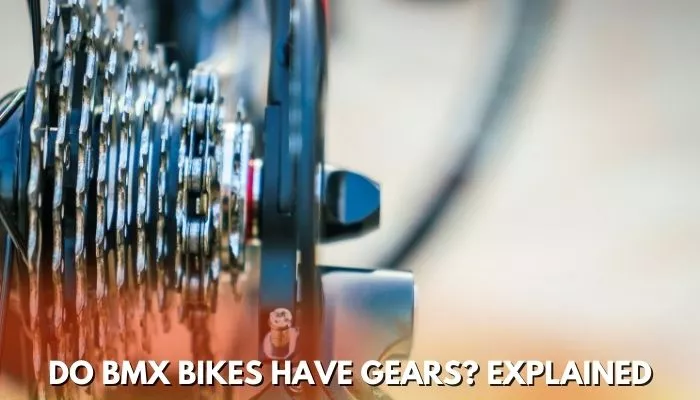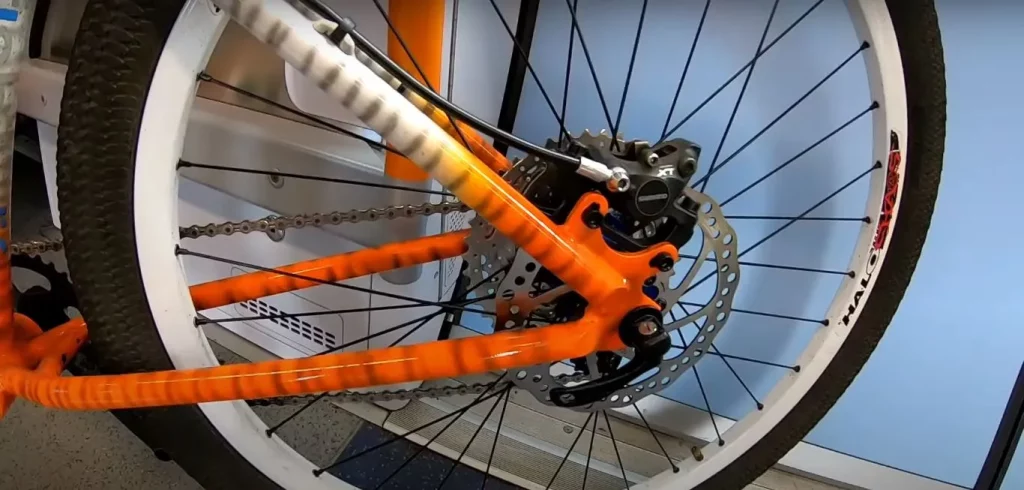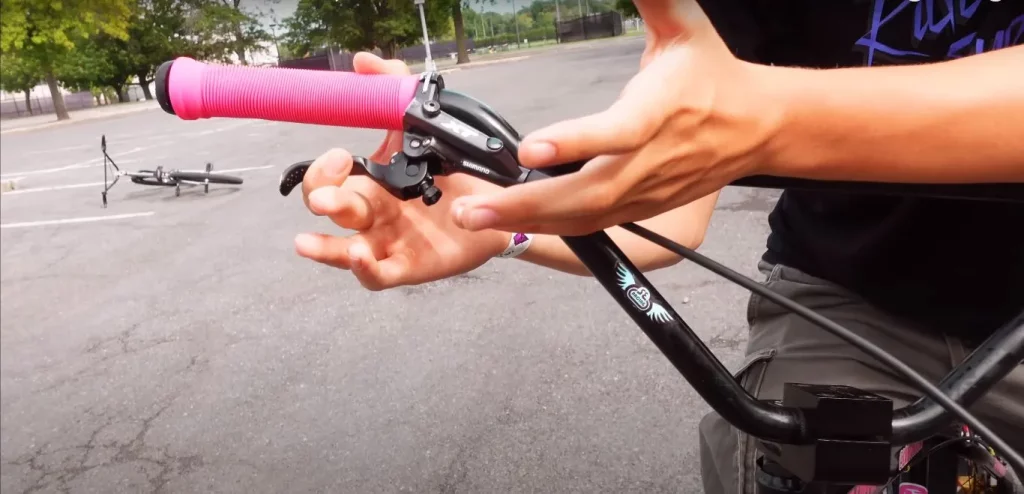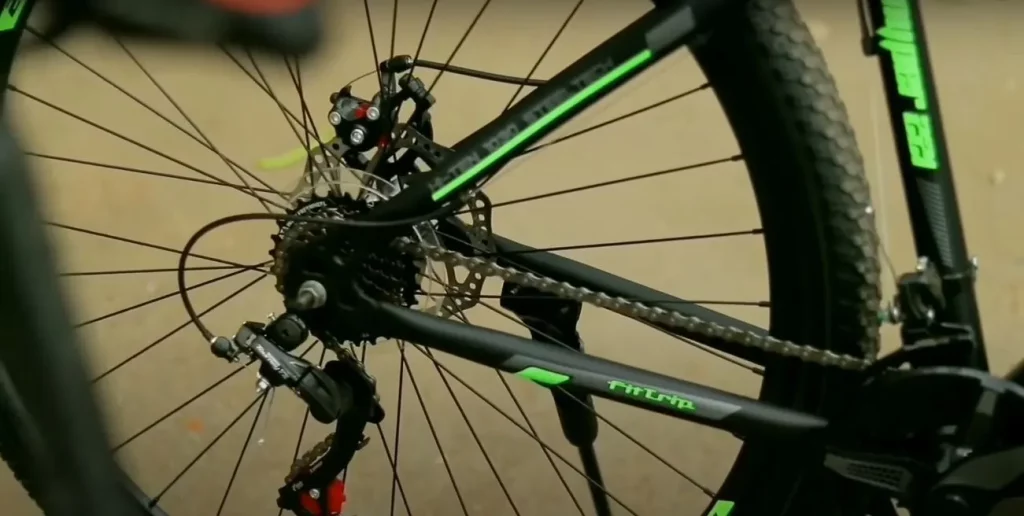Do BMX Bikes Have Gears? Explained

Cogs, cassettes, and sprockets are the elements of the BMX bikes’ gear, and a chain links them together. A BMX bike usually has different gears than a road bike or a mountain bike. Due to the fact that BMX bikes often only own one gear, the configuration must take the rider’s requirements into consideration.
Do BMX Bikes Have Gears?
Although BMX bikes only have one gear, they do have gears. The configuration, however, can sometimes be said to be the same as having two gears. A larger gearing ratio of 44/16 had previously been employed on BMX bikes. However, the most contemporary BMX bike variants have lower gears with a ratio in the range of 22/8, 23/8, 25/9, as well as 36/13.
As a result, we can see that a BMX bike’s gear system seems to be very simple at first sight. Nevertheless, there are plenty of different BMX bike versions available, with everyone featuring a significant number of differences in the gear combinations and gear configurations.
In this article, we’ll go over everything you need to understand about BMX bikes and their gears, talk about gear ratios, and explain to you how to find out BMX gearing ratios.
Table of Contents
Do BMX Bikes Have Gears?

BMX bikes are not far behind road as well as mountain bikes in terms of popularity from across the globe. The simple designs and functions of these bikes allow them to withstand particular weights and travel through rough terrain that road bikes and mountain bikes are afraid to tackle.
BMX bikes often only have one gear, compared to the multiple gears present on other heavy-duty bikes, but the gear still is present. Bikes can be outfitted with either tall gearing or short gearing.
The ratio between the number of teeth on the sprocket, as well as the cog in the back wheel, is higher in tall gearing than short gearing, corresponding to the opposite.
While it is simpler to ride with short gearing, it is more challenging to ride with tall gearing to generate a bigger momentum of speed. Different types of riders favor various types of gearing.
Whereas flatland riders will generally prefer short gearing, racers will typically end up choosing taller gearing. The height of the gear ratio grows according to the number of teeth in the sprocket, while the opposite is the case for short gear ratios.
How Many Gears Are There On BMX Bikes?

A gear is a revolving disc or wheel with cut teeth that transfer force when they connect with some other toothed element. The majority of BMX bikes only have one gear. A BMX bike with multiple gears is unusually hard to find. The single-speed gear (single gear) is a main factor in conserving the bike’s modest weight.
In comparison to single-speed gears, multi-speed gears are much less dependable and need greater upkeep. The simplicity of the technical design and cheaper maintenance costs are further benefits of a single-gear configuration. The ratio of the BMX gears influences how effortlessly you can bike and how quickly you can generate speed.
The Gear Ratio On A Bike

The number of teeth on the bike chain ring and sprocket, as well as their ratio, are crucial variables to think about, even though BMX bikes don’t have multiple gears. The tougher it is to ride, the greater the ratio between these two, and the smoother it is to ride, the smaller the number.
Divide the total number of teeth on the chain ring, for instance, 25, by the number of teeth on the sprocket, for example, 9, and the result will be 2.78 as the response to this ratio estimate. Hence, every time the chainring is adjusted, the bike’s rear wheel will eventually turn over between two and three-quarters of the time.
The velocity and maneuverability of your bike can be determined with complete certainty using this technique. However, the outcomes can differ according to the dimensions of the wheels and the width of the tires. The BMX bike has many different parts which function together to provide you with a pleasant, nimble ride.
Over time, the 44/16 gearing, which has 55 gear inches, evolved into the most conventional and well-liked BMX gearing. The finest gear ratios fall within a half-inch of 55 gear inches, and these are frequently appropriate for a variety of riders, such as flatland and park riders, professionals, and stunt riders.
What Is The Ideal Gear Ratio For BMX Bikes?
Calculating your bike’s gear ratio is the first step you must take. Your bike’s gear ratio will be the consequence. The best gear ratio, though, is what? What gear ratio will best meet your demands or another option?
The size of the wheels and, more importantly, your level of ease will determine the answers to these questions. The opposite is also true: you’ll need more teeth if your BMX bike has significantly huge wheels. Settle on the BMX bike gear ratio that meets your requirements most effectively, then, to avoid any problems.
Here are the greatest BMX bike gear ratios to employ and what makes them the best, as verified by survey stats;
- BMX Bike Gear Ratio of 25/9
This gear ratio for BMX bikes is, without a doubt, the most common one accessible. A gear ratio of about 2.78/1 is present. You should be aware that the better the BMX bike is for you, the lower the ratio needs to be. The bike may move ahead with much less energy when the gears are smaller because riding is considerably simpler.
- BMX Bike Gear Ratio of 44/16
This gear ratio, which has 55 gear inches, is widely considered to be the highest one overall. It is one of the earliest BMX models with relatively large tires and is still on the marketplace. Several BMX bikers continue to utilize them.
- BMX bike gear ratio of 30/11
For the BMX bike, this is an even great ratio. It has a ratio of roughly 2.73/1, which makes it a great proportion to consider when making decisions. The balance is essentially simple, which makes riding simple.
As there are numerous BMX bike gear ratios on the market, selecting the one that best corresponds to your needs is strongly advised. The gear ratio that is most frequently advised is 2.8/1 or less.
Are BMX Bikes Equipped With Fixed Gears?
Yes, of course, BMX bikes have fixed gears, yet not every one of them does. There is no freewheel mechanism on these BMX bike types. Currently, the majority of BMX bikes are outfitted with hubs that would let riders coast or freewheel. With this arrangement, a rider can progress or change the direction of the bike with no need to ride.
Because of their straightforward design, fixed gears have grown to be increasingly widespread. They are also reasonably lightweight, making transportation of them relatively simple. If you are knowledgeable about riding, you will see how essential this design is due to its simplicity.
Simple. Because the bike lacks brakes, it ceases to function when you push or stop riding. Of course, it’s enjoyable to ride a fixed-gear BMX bike.
Why Is It Advantageous For A BMX Bike To Have Gears?

The development of BMX bikes with gears has given bikers more possibilities than at any point in time. BMX bikes are a significant component of the biking industry.
By allowing riders to change their speed based on the environment or their demands, gears simplify the process of climbing hills, navigating through tight places, or covering extended distances without being concerned about wearing themselves out.
These benefits have rendered BMX with gears on sale a really likely choice among bikers demanding convenience and efficiency – perfect for those uphill climbs, competitions, or extended rides throughout your city.
With A BMX Bike, How Do You Change The Gears?

The derailleur system used by the majority of other bikes helps make switching gears far more complicated than it is on a BMX bike. BMX bikes typically have a single-speed mechanism, indicating that there is only one gear accessible and no way to switch between multiple gear ratios.
However, certain more costly BMX bike models might be fitted with a freewheeling base that allows various speeds. On these types, you must adjust the chain tension by either loosening it or tightening it, just as you would with standard derailleurs, in order to change the gears.
Any devoted BMX rider should be capable of modifying their chain tension, as it can help to assure that their equipment is constantly functioning at its peak efficiency.
What Are Some Suggestions For Properly Using The Gears On A BMX Bike?
Learning how to use the gears is essential for effectively and efficiently riding on a BMX bike. Make sure your bike chain is properly lubricated before anything else.
By doing so, the degree of resistance will be decreased, which will make it simple and easy to ride. The length of your back derailleur can also be altered in order to change the pressure of your chains.
It’s also crucial to shift gears at the appropriate moment. While you are pushing hard, you should shift up, and when you are climbing a steep hill or preparing to speed swiftly as you approach the top, you should shift downwards.
Finally, it’s critical to keep in mind that perfectionism is a learned trait. While learning to change gears can be difficult at first, with experience and more time spent riding your bike, you’ll soon get it the majority of the time right.
FAQs
Do BMX bikes have two brakes?
Both the front and back brakes on freestyle bikes are present. Often, just the rear brakes are featured on BMX and jump bikes.
It matters what kind of brakes you use. Because they need only pure halting power, BMX riders favor linear-pull brakes as they provide the finest grip.
What equipment do BMX riders wear?
Helmets, gloves, knee as well as elbow pads, and other kinds of protective equipment are carried by BMX riders.
They are crucial for avoiding both cuts and bruises and open wounds and more significant injuries. The helmet is an essential piece of gear for any BMX rider.
How much gear does a superbike have?
On the bike’s lower left side is where you’ll locate the gear shift lever. To shift gears, we put our left foot forward.
The first gear is located at the very bottom of the gear pattern, and it then becomes neutral, and then the remaining gears, first, second, third, fourth, fifth, and rarely sixth, are positioned from lowest to highest.
How are the gears changed on a BMX bike?
The derailleur system used by the majority of other bikes makes switching gears much more complex than it is on a BMX bike.
BMX bikes typically have a single-speed mechanism, meaning they have just one gear offered and no ability to convert between multiple gear ratios.
How many gears are there on BMX bikes?
The first five gears are the most generally applied and enable bike riders to change their speed based on their location or desires readily. A typical BMX bike with gears typically includes an 18-speed cassette hub, which divides down into nine different levels.
Conclusion
The topic do BMX bikes have gears is left for now. Has been responded to. Thus, the gear system of BMX bikes has only one gear in total. Divide the total amount of teeth on your bike chainring by the total number of teeth on your sprocket to get the number of times your rear wheel will turn for every rotation of the chainring.
Conversely, a greater number implies that pedaling is more challenging. The simpler it is to ride, the smaller the number. This means that you’re going to have to exert additional pressure. If you want to buy a BMX bike, look for one with a gear ratio of less than 2.8.
